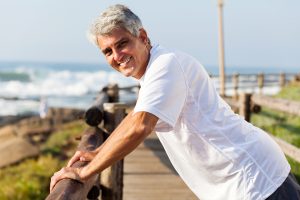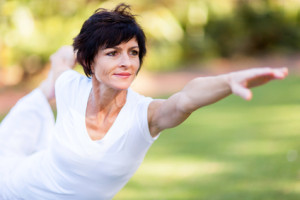1. POWER
In our youth we all have power – power of thought, anticipation, joy, action, mystery, imagination and so much more. As we get older, we lose our wonder of the power of our own life. This term also refers to our physical power. I know that when I am doing my weight training I am addressing my power and physically: it is made very clear to me while I am bench pressing 250 pounds 20 times. When the barbell is above my chest I see the “real” power of my body. My focus is 100% on the bar and the need to move it without injuring myself – which so far I have done quite successfully.
In our 20s and 30s, what do we do to build our power both physically and mentally? Do we take into account that for every day that goes by we are losing our power – even if we are training? We need to focus our attention on getting and maintaining power for our future in order to be fit. Take time as early in life as you can to account for – and act upon strategies that will enable and empower you to develop your mental – and physical power. Old people have no power left – it is lost to time – and once it is gone it can never be recovered. I feel as long as I can bench press 250 pounds I will not be old.

2. STRENGTH
Strength of mind, spirit, thought, feeling and passion. These as well as physical strength are critical to aging well. I am training with weights twice a week to maintain my overall physical strength. I do a program of 16 specific exercises for each major muscle group with multiple sets and resistances. I do as many as 600 – 680 sets for each session and as long as I can maintain this program I know I will never be old.
What are you doing to build strength for your future mentally and physically? If you are not yet 40 then more is better. The younger you are the more resilient and accepting your body will be to the training. The older you are the slower the results will come – and the risk of injury is higher because joints, connective tissue and decreased bone density will all be in play. Start to build strength now. Adding more weight training to your schedule is crucial to aging well and you will be better off in the years to come. Don’t wait!
3. ENDURANCE
Endurance is being able to do work over time. Our body can – and does – lose the capacity for demonstrating endurance with increasingly sedentary lifestyles. This is where my running has helped me because after 52 years of running my heart is strong and I can run at varying speeds over time – and finish feeling energized. Exercise is comfortable for me – and fun – because I have been this way my whole life.
Start building your endurance by taking group exercise classes, finding an exercise you will do and enjoy such as cycling, swimming, walking or any other form of movement that suits you. Start now to strengthen your heart – it is the pump of your life and will carry you through the years if you give it the gift of movement. Sitting is the “new smoking”! I will run until I die and that is something I am happy about every day. Today I did 6 miles in 35:06 and felt great!
4. SPEED
We no longer need to run from most dangers such as our food chasing us as it did sometimes in our hunter/gatherer past thousands of years ago. Today we need to be able to have the ability to act quickly if something does come our way – maybe the zombie apocalypse? Just kidding! For me being fast AND strong are two key measures of whether I am getting old or not.
I am training to be both fast and strong for as long as I can and this is why I set the goal in the forward of my book to run a 6 minute mile on my 80th birthday. Will I be able to do it? I don’t know if I will live that long but in the absence of that knowledge at least I am training TODAY for that eventuality and it brings me great comfort to know that as long as I am training in my 70s the way I am TODAY, that is all that matters to me because tomorrow will just have to take care of itself.
You too can train for speed but just remember that speed training is a higher risk activity and the older you are the more you have to account for those risks the best you can. In America today there are very few older people who can do speed work but think of the excitement and joy such training would bring into our daily lives if we chose to embrace this option. I love to run fast so for me it is an integral part of my daily training.
5. QUICKNESS (AGILITY)
Old people don’t have the ability to quickly adjust their step so they can fall and seriously injure themselves. The consequences of falling can be catastrophic and most falls result in a broken hip – which is a leading cause of death among seniors today. Being able to react and “catch yourself” before you fall is important.
On a run a couple of years ago my foot caught a crack in the sidewalk and I went flying forward landing on my knees – and hands. If I had not broken my fall with my arms my face would have smashed into the concrete creating a great problem for me – for sure! I was sprinting at the time so I had little time to react. I was glad I could save myself from greater harm other than a sore knee!
What do I do for quickness and agility? Not much really. It is an area I need to explore more fully but in the absence of agility drills I am confident in my strength and power to save me. I need to give this area of fitness further thought going into my 70’s. Agility training can be accomplished in a number of ways. Seek the counsel of a fitness professional in deciding whether this is something you need to address in your own programming going forward.
 6. BALANCE
6. BALANCE
The issue of balance is huge in the aging population. The “senior shuffle” is all too commonplace in the world and the nature of that pattern of walking is always ripe for potential disaster. When you walk with a gait that requires you to look down at your feet and then shuffle rather than stride you are already in trouble. It is only a matter of time before a fall WILL occur and possible serious injury will be the result. Older people generally have weak legs and do not train for balance enough because they lack the confidence to even try.
I always wanted to put my older clients on the floor and have them get up but none of them even wanted to attempt these important drills. I believe in balance drills for everyone who is not fully engaged in a strength training program. Regardless of age – if you aren’t training for balance you are at risk for falls. I always included balance drills for my older clients – standing on one leg, doing “strides” one step at a time etc. Balance mentally and physically is imperative to aging healthfully.
7. FLEXIBILITY
This is probably the most important of the seven keys to fitness because it applies to all aspects of life – not just the body. If we find ourselves becoming more close minded and less tolerant of differences in people, we are old. If we can’t move our bodies without injuring them, we are old. If we don’t feel comfortable moving or doing the daily activities of life, we are old.
“Age is just a number” but flexibility of thought and movement is essential to being young – as opposed to old. You can be 20 and old if you are inflexible in body or mind. It is up to you as to how to become flexible in mind and body. If I had found yoga in my 20s, I would have developed that skill and be using it today as a part of my ongoing training/programming but I found running instead so I do that because I love it.
I would recommend yoga for everybody – regardless of age and in my 70s I am going to make that change to incorporate yoga into my training. I may use a weight training day or a running day for a class but I DO know it is an activity that will keep me young – and flexible. Old people are not flexible. They are weak physically. Weak and inflexible people get injured all the time and I am going to make time for that in my own programming.
Summary
Think of the 7 keys to fitness as a way of programming your mind and body for a happy, healthy and fit future. I never want to be old but I know time is always marching on regardless of what I do to prevent it. What we can’t control in our lives we must let go, and what we can control – our thoughts, choices, actions, and feelings – MUST be used to help us design a new life. This is what it means to BE happy, healthy and fit!
We are energized by what we want to see in our life and it all begins with our ability to embrace the 7 keys to fitness. Let them help evolve you into the person you want to become. Begin today and see what happens. You WILL be surprised and happy with the results – I guarantee it!
This article was originally printed on healthynewage.com. Reprinted with permission.
Nicholas Prukop is an ACE Certified Personal Trainer & a Health Coach, a fitness professional with over 25 years of experience whose passion for health and fitness comes from his boyhood in Hawaii where he grew up a swimmer on Maui. He found his calling in writing his first book “Healthy Aging & You: Your Journey to Becoming Happy, Healthy & Fit” and since then he has dedicated himself to empowering, inspiring and enabling people of all ages to reach for the best that is within them and become who they are meant to be – happy, healthy and fit – and be a part of a world where each person can contribute their own unique gifts to life.
If you need help in designing a fitness plan, you can contact Nicholas Prukop via email at runningnick@sbcglobal.net or read his inspiring book Healthy Aging & YOU.

